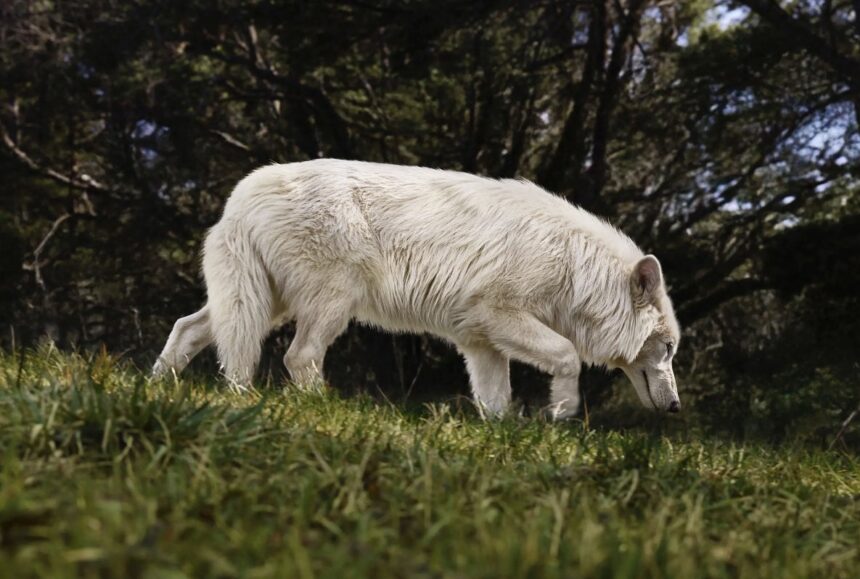Dire wolves might sound like something out of fantasy fiction – especially popularized by the Game of Thrones series – but they were very real creatures that once roamed North and South America.
Often confused with or overshadowed by its modern counterpart – the gray wolf – the dire wolf carved its own fearsome path through prehistory.
In this article are 12 fascinating facts about dire wolves
1. Dire Wolves Were Real Animals – Not Just Fantasy
Despite being made famous by fantasy fiction, dire wolves Canis (Aenocyon) dirus actually lived thousands of years ago.
This canine existed during the Pleistocene Epoch (2.6 million to 11,700 years ago). The species were considerably widespread throughout North America and parts of western South America, and their skeletal remains have been found in Florida, the Mississippi River valley, the Valley of Mexico, Bolivia, Peru, and Venezuela.
READ ALSO: 10 Animals that live underground
2. Dire Wolf Means “Terrible Wolf”
The scientific name of the dire wolf is Canis (Aenocyon) dirus and the name Aenocyon dirus translates to “terrible wolf.”
This is because this species of animals were apex predators of their time, armed with powerful bites and muscular builds.
3. They Are Bigger, And Bulkier Than Modern Gray Wolves
Dire wolves were significantly bigger than today’s gray wolves, weighing between 130-150 pounds (59-68 kg) and sometimes more.
They had stockier builds and more powerful jaws, making them well-equipped for hunting large prey and making them formidable predators in their environment.
4. Emergence Of Dire Wolves
The lineage that included the dire wolves and their ancestors emerged some 5.7 million years ago during the late Miocene Epoch (which lasted from 23 million to about 5.3 million years ago), and it evolved independently of the lineage that produced modern wolves and their close relatives.
5. Wolves Usually Live And Hunt In Packs
Wolves usually live in packs of up to two dozen individuals, but packs numbering 6 to 10 are most common.
A pack is basically a family group consisting of an adult breeding pair (the alpha male and alpha female) and their offspring of various ages.
The ability of wolves to form strong social bonds with one another is what makes the wolf pack possible. This pack behaviour is that which makes it possible for them to take down large prey.
A pack’s territory can be 80 to 3,000 square km (31 to 1,200 square miles), depending on prey abundance.
6. A Unique Means Of Communication
Dire wolves communicate with one another by visual signaling (facial expression, body position, tail position), vocalizations, and scent marking.
Howling on the other hand helps the pack stay in contact and also seems to strengthen social bonds among pack members.
Along with howling, marking of territory with urine and faeces lets neighbouring packs know they should not intrude.
In cases of intrusion, intruders are often killed by resident packs, yet in some circumstances they are accepted.
7. Breeding
Breeding of wolves occurs between February and April, and a litter of usually five or six pups is born in the spring after a gestation period of about two months.
The young are usually born in a den consisting of a natural hole or a burrow, often in a hillside.
8. Wolves Are Known For Wide Travel Range
Dire wolves and other species of wolves are renowned for their wide-ranging travels, and it is not unusual for them to cover 20 km (12 miles) or more in a day.
They move and hunt mostly at night, especially in areas populated by humans and during warm weather.
9. Choice of Prey
The major prey dire wolves like are large herbivores such as horse, deer, elk, moose, bison, bighorn sheep, caribou, and musk oxen, which they chase, seize, and pull to the ground.
It is important to know that a large percentage of the animals that wolves kill are young, old, or in poor condition.
10. Wolves Natural Enemy
Wolves have few natural enemies other than man. In most areas of the world, humans are the leading cause of death for wolves.
However, in areas of high wolf density and declining prey populations, the major causes of death are killing by other wolves and starvation.
11. Diseases That Affect Wolves
Canine parvovirus, distemper, rabies, blastomycosis, lyme disease, lice, mange, and heartworm are some of the diseases and parasites that can affect wolves.
12. Scientists Are Still Learning More
Thanks to new fossil discoveries and genetic studies, scientists continue to uncover more about the dire wolf’s lineage, behaviour, and eventual extinction.
Every fossil adds a piece to the puzzle of this fascinating Ice Age predator.
In all, the dire wolf wasn’t just a creature of myth – it was a real, fearsome predator that once ruled the wilds of the Americas. Though extinct, its bones still tell stories of survival, power, and ancient ecosystems long gone.






